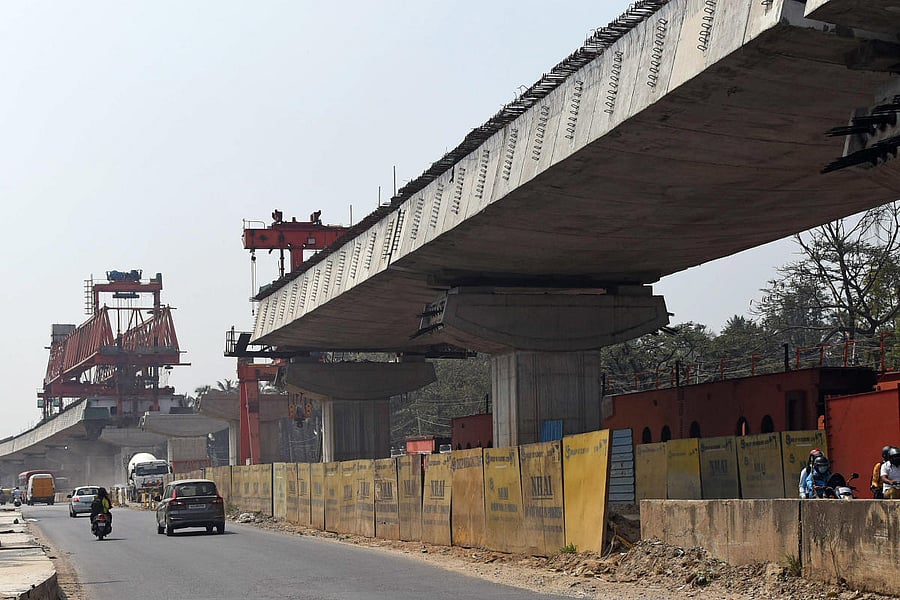
The 10-lane Bengaluru-Mysuru expressway, which is set to be thrown open to public in a year, will pose a threat to the wildlife in the two forests situated between Bengaluru and Ramanagar besides the wildlife near Srirangapatna, forest officials and experts said.
The death of a young male leopard on Wednesday morning has highlighted the risks posed by the project, which will double the width of the road in crucial areas. The four-lane highway (NH 275) will be widened into 10 lanes, which includes a six-lane toll road flanked by the two-lane service roads on each side.
The project has been split into two packages - Bengaluru-Nidaghatta section to be completed in the next two months and the Nidaghatta-Mysuru section to be completed by September, as per information from the National Highways Authority of India (NHAI).
The Forest department has identified two sensitive areas between Bengaluru and Ramanagara where officials have observed regular movement of wildlife.
The first one is around Handigundi forest near Ramadevara Betta, where leopards have been spotted for years. The second one is the Hultar Reserve Forest near Bidadi, which is part of the elephant corridor connecting Bannerghatta to Savandurga.
“We have proposed an overpass on the highway near Ramadevara Betta and an underpass for the elephant movement between Bannerghatta and Savandurga. The NHAI has agreed to work on the same. In the wake of the death of a leopard, we will check whether additional measures are required,” said Devaraj V, Deputy Conservator of Forests, Ramanagar.
A senior officer in Bengaluru, however, said the two safe passages will not be enough. “The density of the leopard population in the hills of Ramanagar and Magadi has gone up exponentially since 2013. At least 30 instances of big cats being rescued from human habitats are recorded every year. On the other hand, the expansion of the villages and cities alike has become a major hurdle for elephant movements. We will see more roadkills as the NHAI’s standard barriers can’t stop the leopards,” he said.
At Srirangapatna, a leopard and two otters were run over by vehicles in separate incidents, with officials stating that the movement of vehicles during the night has to be regulated with rubber road humps.
Conservation biologist Sanjay Gubbi said the problem lies in the planning stage. “Mitigation measures are not considered at the planning stage because our idea of conservation is limited to the protected areas. That needs to change immediately before further damage to the wildlife and ecology in general,” he said.
He added that the safe passages provided for animals to cross linear projects look more like an afterthought. “The highway is an engineering solution to address a human problem. The same amount of care and attention to detail needs to be given to ensure smooth movement of wildlife,” he added.
Check out the latest videos from DH:
